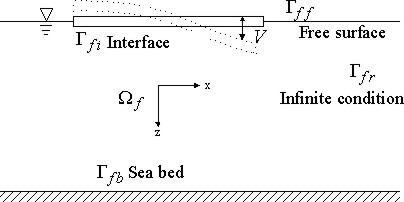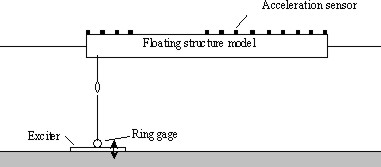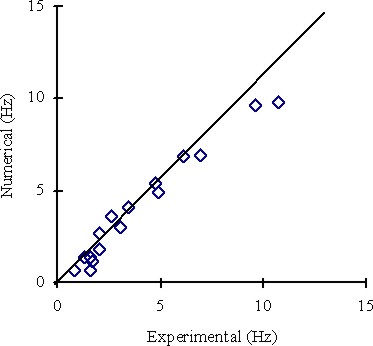
engineering & technology publications
ISSN 1759-3433
PROCEEDINGS OF THE FOURTH INTERNATIONAL CONFERENCE ON ENGINEERING COMPUTATIONAL TECHNOLOGY
Fluid-Elastic Beam Coupled Eigenvalue Analysis using the BE-FE Combined Method
+Department of Architectural Engineering, Faculty of Engineering, Polytechnic University, Sagamihara, Japan
*Department of Mathematical Information Engineering, College of Industrial Technology, Nihon University, Narashino, Japan
The coupled system is formulated as the boundary value problem considering the dynamic interaction between elastic beam and fluid shown in Figure 1. The frequency equation governing the motion of coupled system is derived by the BE-FE combined method as Equation (15) and solved by a determinant search procedure.
In order to verify the proposed coupled analysis method, some vibration tests are carried out for two kinds of flexible plate floating model. A sketch of the water tank used in our vibration tests is shown in Figure 2.
Several numerical examples are presented for elastic floating models and compared with natural frequencies corresponding to each mode obtained from the experimental modal analysis.
Figure 3 shows comparisons of natural frequencies obtained by numerical and experimental methods for floating models. The vertical and horizontal lines mean numerical and experimental values. Consequently, when numerical and experimental results are plotted for comparison, they demonstrate good agreement. It seems that these results almost agree except for natural frequencies corresponding to rigid body motions. The effectiveness and applicability of the analytical method developed were shown through the comparison with the analytical and experimental results.
purchase the full-text of this paper (price £20)
go to the previous paper
go to the next paper
return to the table of contents
return to the book description
purchase this book (price £95 +P&P)



